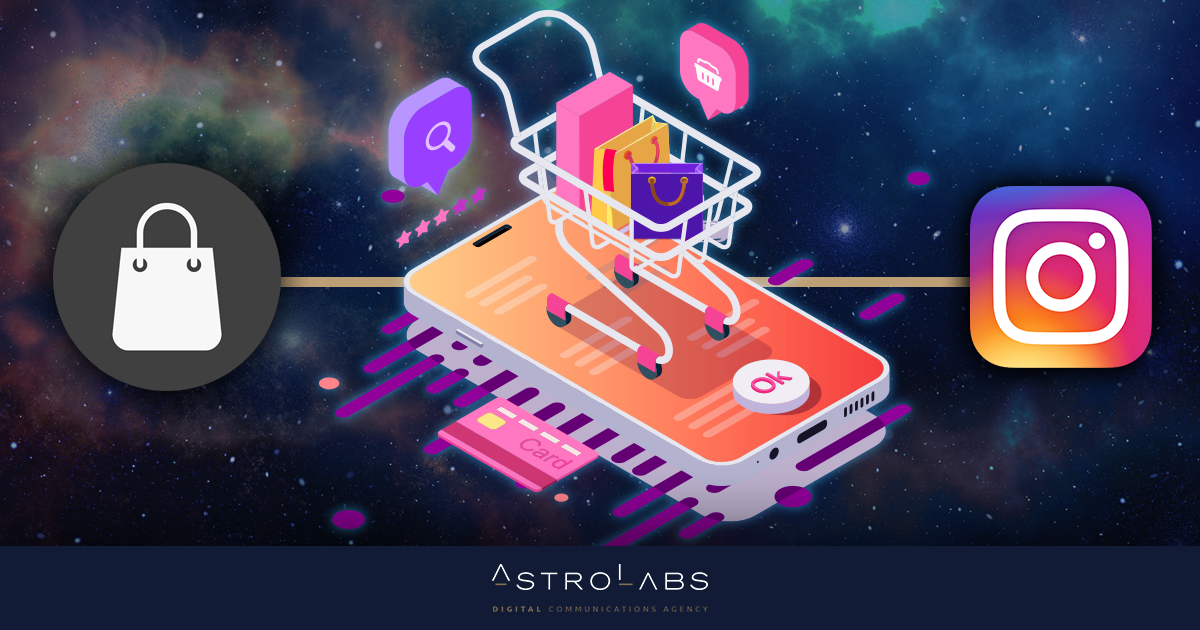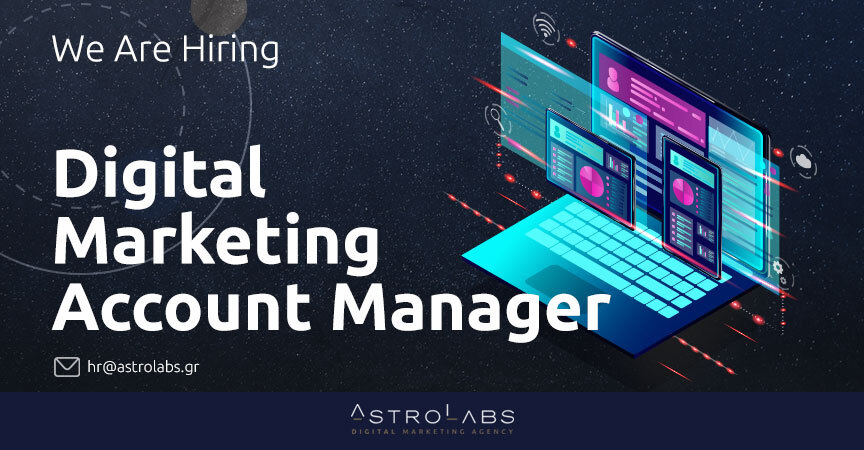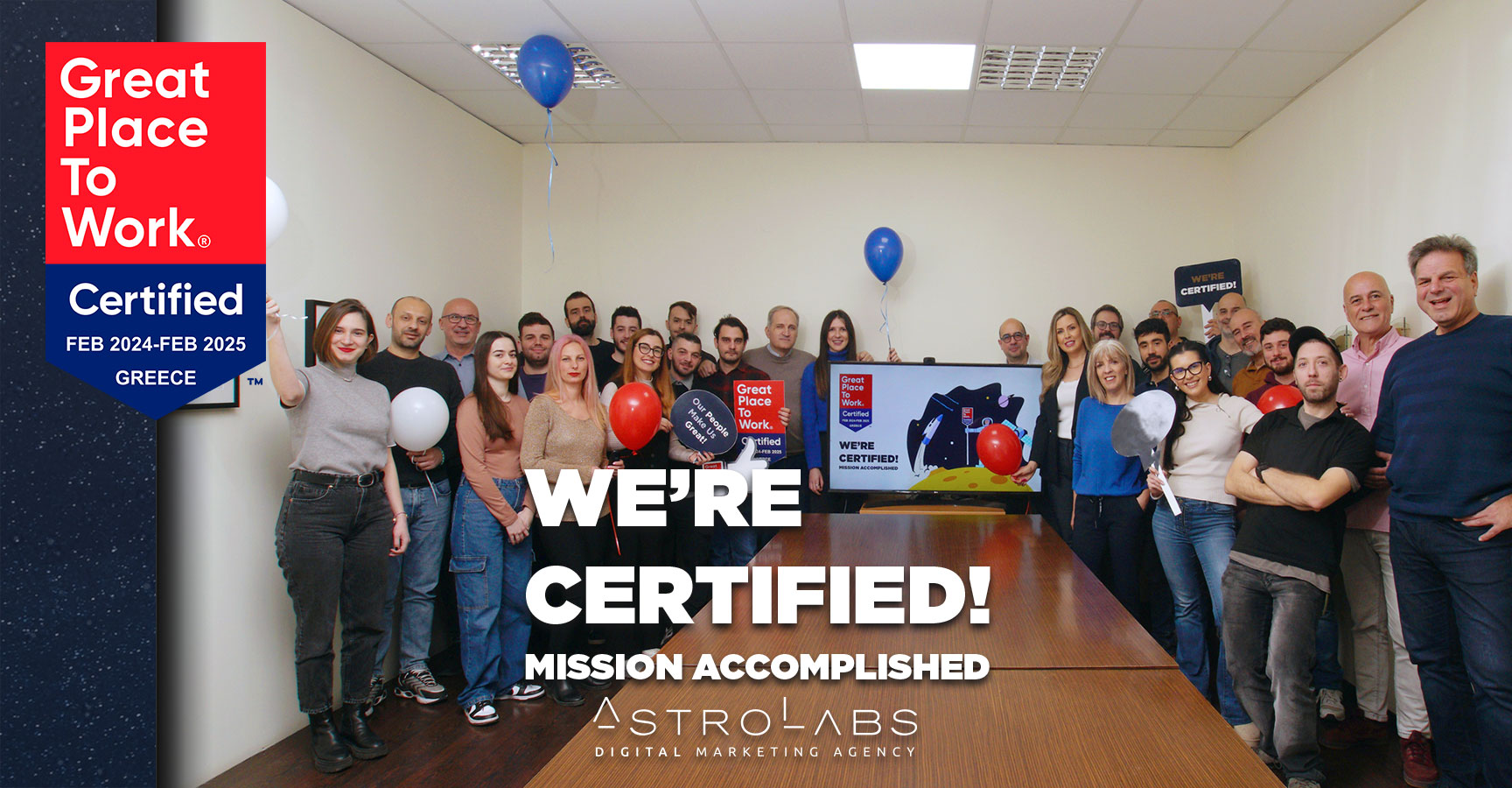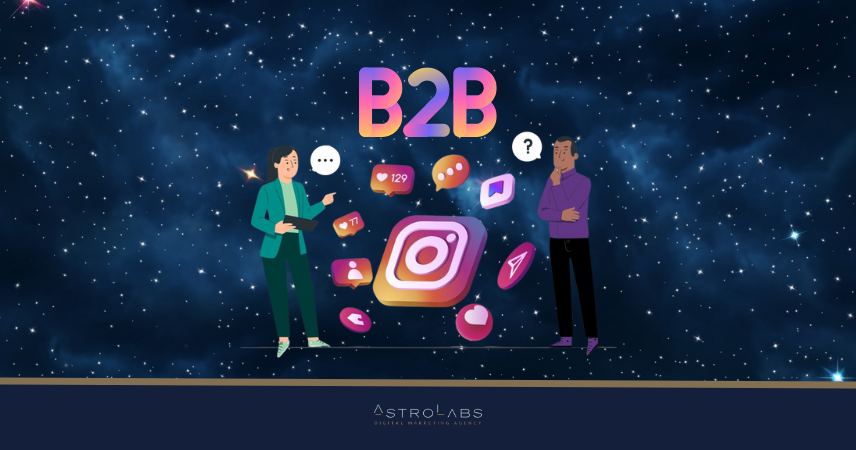
Do you sell products and have a professional Instagram profile?
The price and information label of your products is much more important than you think.
Instagram stores and posts that can lead you to a purchase through price tags can provide an immersive shopping experience within the Instagram app, allowing consumers to discover new products, buy them instantly or even save them to view later. In the US, the Instagram platform has enabled users to complete their purchase without leaving the app and this has even more benefits, so it’s good to adapt because it’s coming to us too.

For businesses in Greece, where access to the in-store integration feature within Instagram has not yet been activated, there is still huge potential for increasing traffic and sales in their e-shop. According to an analysis of 50 brands by Big Commerce, Instagram posts with a purchase tag increased website traffic by 1,416%.
Instagram clearly shows that it has started to prioritize Instagram Shops.

Recently the icons in the app were rearranged to prioritize the features of the Instagram Shop. The Shop icon is now placed at the bottom of the screen, where the Like icon used to be, resulting in your finger being unconsciously guided there. Of course, nothing is accidental and this change pushes users to shop more easily on the platform.
As more and more consumers start searching for products on Instagram, they want content to display product tags with their features and price. Therefore, it’s important to make product tags a key part of your Instagram post strategy. This will give you the opportunity to create a new customer base and re-engage the audience to allow them to buy.
The following tips will help you to regularly share product images across all your content types, while ensuring that it doesn’t become boring for your audience, going to the other extreme such as exclusive product photos with prices.
Optimize Product Tagging according to consumer behavior on Instagram.

As with all aspects of social media marketing, you need a well-planned strategy to get the most out of your Instagram Shop. When formulating your strategy, think about how consumers use Instagram.
They don’t come to Instagram to make purchases even though that is often the end result. The audience that follows your content doesn’t spend a lot of time on your posts, so when they see a product they like, you need to encourage them to take the next step, you need to make the process quick and easy for them. The simpler it is, the more likely they are to buy.
To develop content optimized for consumer behavior on Instagram, consider these points:
• Be judicious in the number of product labels you use.
Don’t overload an image or video with too many tags or overlap one tag with another so that users can easily touch them.
• Only label products that are shown in the corresponding photo or video and not, for example, similar products that match the description, to avoid confusing users who see labels for products that are not shown.
• Add product tags to all product posts. This way, users can simply click on the tag to learn more information about that product, rather than having to visit your profile to find the link to your bio and wander around your website to find the corresponding product.
• Since in-app checkout is not yet available in our country, link each product directly to its own page in your e-shop so that customers don’t have to search the website to find anything, but are automatically transferred.
Finally, choose images that reflect the diversity of your audience. Ensure that your audience sees themselves in the content you post, so you can help them decide if the product you’re presenting is right for them. It’s important to keep the above in mind for every post and story you publish on Instagram.
Give priority to Instagram videos with product tag

The benefits of using video on Instagram are huge. Moving a video and sound (for the few users who don’t have it on mute) “prevents” scrolling in the stream or otherwise scrolling because it draws attention.
In a video, you can show how your product is made, how it is used and why your customers choose it. For example:
• Create videos with user instructions for your products
• Highlight the unique features of your product.
• Show how your products can be used and the benefits of using them.
• Answer the most frequently asked questions (FAQ) about your products.
You should use a variety of video types in your content programming for stories, reels, IGTV and streaming posts so your audience can choose the types of content they prefer.
Instagram Stories

According to an Instagram survey, 58% of respondents said they were more interested in a brand or product after seeing it in Stories. This makes Stories a great place to share products and add tags to increase traffic to your store on Instagram. If you have the Swipe-Up feature, it’s even better for the audience experience that leads directly to where they need to be and to your e-shop.
Saving the best stories, including your products, as Instagram highlights is a great way for new visitors to your profile to learn more about them.
IGTV

If you’ve been delaying your use of IGTV, you may want to reconsider. IGTV takes up 4 times more space in the Explore stream than simple stream posts and 2 times more than Reels, improving the visibility of your brand and products
Select content by product tag in Instagram guides
Instagram guides are a kind of virtual directory or magazine within the Instagram platform. This feature allows you to curate a collection of posts or product listings from your business or other public accounts. Each guide includes a cover image, a title and a short introduction, and each post in the guide can include a description.
Here are three types of guides, examples you could use to showcase your products.
Gift Guides: Put together a gift guide for key gift-giving dates such as Christmas, Valentine’s Day or Mother’s Day. Promote your products, as well as products from others perhaps and partners whose content may appeal to your audience. When you promote other businesses’ products, you could potentially reach their audience as well if they choose to share your guide.
Topical Roundups: Grouping complementary products in a guide can help readers to make purchasing decisions. For example, if you are a fashion brand, you could create a “What to Wear to a Summer Wedding” guide with dresses, shoes, jewelry and beauty products. And a few months later, showcase other products in a “What to wear to a winter wedding” guide.
FAQs – Συνήθεις Ερωτήσεις: Your content strategy should answer your audience’s most frequently asked questions so they can more easily decide to buy from you. Then, you can group all this content into an Instagram guide for easy access.
Remind your audience to save products to their Instagram wishlist
Instagram users can discover products by going to business profiles and viewing posts with product tags in their feed, Stories, reels, exploration and IGTV. In the US, marketers can also add tags to products during Instagram Live broadcasts
When users discover products they like, they can save tagged products into a shopping collection, which Instagram strategically named «Wishlist». This means they can easily go back and complete their purchase later and will be reminded of the product each time they visit their wishlist, which is especially useful for products with a longer shelf life rather than seasonal products.
Instagram describes stores as a way for users to “See, tap, shop” to «See, tap, shop» to see, be guided to the details and shop, from users to consumers and the opportunities to discover products in their feed is now everywhere! By tapping on the product label, customers can quickly discover more about the product, read the guides and purchase a product either in-app (US only) or through their e-commerce store. Instagram stores are designed to make the shopping experience simple and painless.



